Before making any assumptions or checks a recent tune-up including air filter, pcv valve, pcv filter, fuel filter, spark plugs and wires, distributor cap, etc. should be made. Check to make sure your base ignition timing is 6 deg +/- 1 deg. There are many vacuum operated systems and often vacuum lines are hard and brittle, check vacuum and replace any lines that look suspicious.
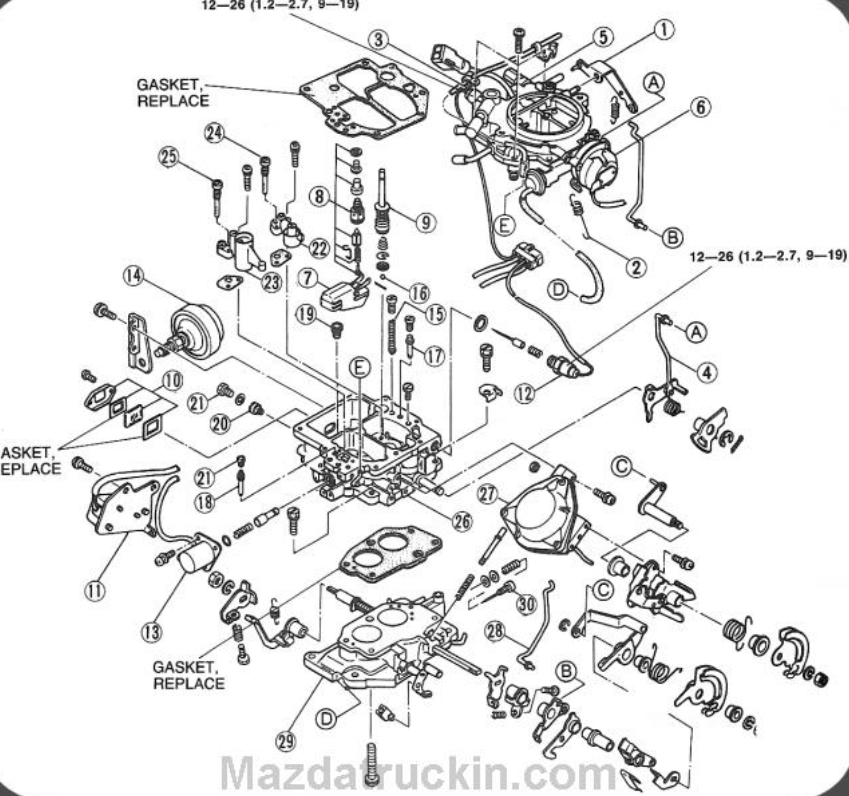
Anti-Tamper Pin
The Mazda carburetors are usually fitted with a Tamper resistant pin to prevent people from changing idle mixture settings. To remove it you need to knock it out with a punch like shown below.
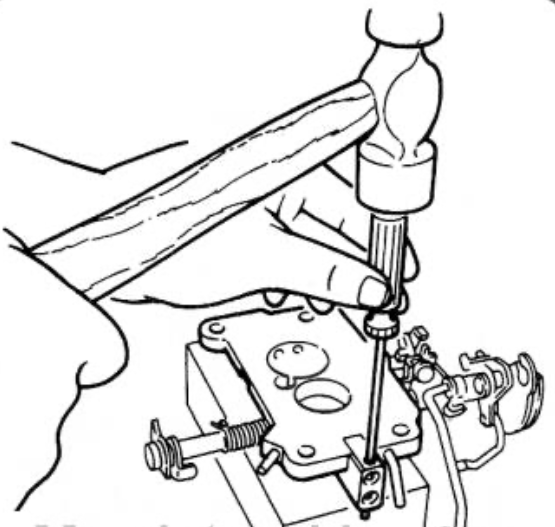
Choke Operation
The choke is electrically operated by regulated voltage at the back of the alternator. When cold the internal spring is also cold which pushes the choke closed, in order to do this though there is a lock on the linkage which prevents it from doing so. To engage the choke on startup you must pump the gas at least once which will close the choke. Once the engine is started voltage output from the alternator starts going to the choke which causes the spring inside to heat up, as it heats the choke will start to back off until open throttle while driving or when the gas is goosed will kick it open and idle normal.
Diagnosing: Take the lid off the air breather with the engine off and cold. Pump the gas once and make sure the choke closes. If the choke does not close it is either stuck or the mechanisms are damaged. If this is the case the
truck may not want to start unless you pump the gas several times before and after starting or it may not want to idle at all. If the choke is stuck you simply need to clean all the linkages, make sure the choke plates open and close easily then spray some silicon lube on there. Heavier lubricants may attract dirt and make the linkages stick again.
To check if the choke is opening warm up the truck. Once the truck is fully warmed up the idle should either drop on its own or kick down after you pump the gas once. If the idle drops down like it should the choke is likely not your problem. If the idle stays high the truck either isn’t fully warmed up or it is staying closed, remove the air breather lid again and look at the choke, if not opening it will still be closed and you will not be able to see down the barrel. The choke may be stuck, worn out, or not getting current from the alternator. Like above make sure all the linkages and plates can freely move. There is an electrical connection sticking out the side, clean the connection and make sure it is not loose, trace this wire to the next electrical connection and clean it, then go to the back of the alternator and remove that plug and clean it. To check the electrical connection with a multimeter set it to read ohms, place one probe in the plug that goes into the alternator and the other on the connector that goes to the choke. If the resistance measured is less than .7 ohms you should be ok. Do not mix this up with .7 K ohms as this is actually 700 ohms and not .7 if you get a high resistance check all of your electrical connections again and clean if necessary.
Accelerator Pump
Purpose: To provide fuel when pumping the gas on startup and to squirt gas into the carburetor during acceleration. Symptoms: Hard start, hesitation, slow acceleration, or stalling when accelerating.
Accelerator pump is damaged or passageways in the carb are plugged and need cleaning.
Air/Fuel Solenoid
Purpose: Located in the carburetor, controls air/fuel mixture based on ECU control output.
To test and diagnose the Air/Fuel Solenoid you will need a dwell meter and a digital multimeter, all tests will be performed with the engine warmed up and at idle.
Testing: To check the solenoid itself warm up the engine and let it run at idle, locate the white test connector near the firewall on the passenger side of the engine compartment. Run a jumper wire from it to ground and listen for the idle to drop. If the idle does not drop remove the air/fuel solenoid and clean it with carb cleaner or replace it. Do not submerge the solenoid when cleaning.
To diagnose the systems which control the A/F Solenoid warm up the engine and let it run at idle. Locate the white test connector mentioned above. This is where you will connect the (+) lead of your dwell meter, run the (-) lead to ground. The meter should now be swinging somewhere between 20 deg and 70 deg if it is not swinging, or is swinging past this range use the checklist below to diagnose the system.
0 Degrees Dwell:
Ignition Signal
Vacuum Sensor
or Water Thermo sensor
27 Degrees Dwell:
Air Thermo sensor
Vacuum Lines
Oxygen Sensor
32 Degrees Dwell:
Water Thermo sensor
More than a 20-70 degree swing:
Vacuum Lines
Oxygen Sensor
Air Fuel Solenoid and wires Clogged carburetor jets and bleeds.
To check the solenoid itself warm up the engine and let it run at idle, locate the white test connector listed above. Run a jumper wire from it to ground and listen for the idle to drop. If the idle does not drop remove the air/fuel solenoid and clean it with carb cleaner or replace it. Do not submerge the solenoid when cleaning.
Slow Fuel Cut Solenoid
Purpose: As the name says it cuts fuel during deceleration or when the ignition is turned off. This helps fuel economy, reduces chances of popping noises from exhaust, and prevents dieseling when the key is turned off and the engine is hot. If this solenoid is stuck or not getting proper electrical connection the engine might not start unless the gas is pumped several times or it may not start at all, once started it may only run for a few seconds. It is located between Accelerator pump lever and choke. If stuck open the truck may smell rich when letting off the gas, make popping from the exhaust, or start getting clogged cats. When the computer goes into limp mode this solenoid is turned off and defaults to open.
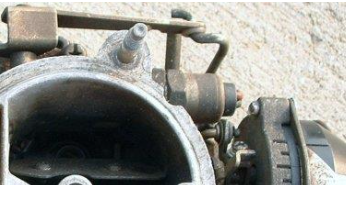
How to Test it:
1. This solenoid should be heard or felt clicking when the ignition is turned off then back on.
2. You can disconnect the solenoid and connect it to 12v and make sure the plunger activates or the solenoid clicks. 3. Disconnect the Neutral Safety switch on the transmission (under the truck) while using a screwdriver to your ear on the solenoid make sure you can hear it click when decelerating the engine from 3,000 rpm. Clean contacts and plunger if dirty or corroded.
4. With the engine running at idle it should stall when you disconnect the 8-pin carburetor connector. (Shown Below)
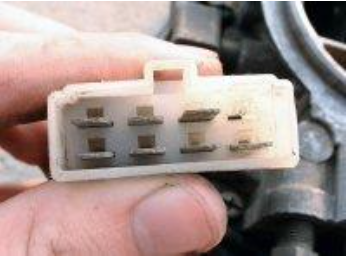
Servo Diaphragm ( A/C or A/T only )
Purpose: Uses vacuum from idle up solenoid to open throttle valve for increased load at idle. Might also be equipped on vehicles with power steering. Malfunction may lead to stalling or rough idle when transmission is in gear, A/C is on, or making sharp turns during city driving. The truck may also need more throttle then normal to prevent stalling when accelerating from a stop.
Coasting Richer Solenoid
Description: Solenoid on side of carb facing the valve cover, held in with three screws, and is controlled by the computer using 2 wires. The purpose of this solenoid is to open the carburetor’s secondary stage fuel circuit during deceleration. There are no vacuum ports in or out of this device, however there is a vacuum port located directly above it in the carburetor body.
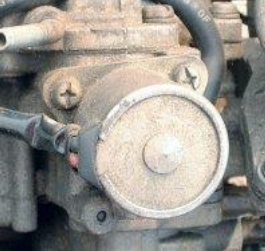
Fuel Pressure
Fuel Pressure on carbureted Mazda 86-93 B2200s and B2000s should be between 3.7-4.7 psi (26-32 kPa). If fuel pressure is high the float level in the carb will also rise causing a rich condition. The opposite goes for low fuel pressure. If fuel pressure is within spec fuel level is high or low, then the float level needs to be adjusted. Fuel level in the carb can be seen in the sight glass facing the front of the truck near the bottom of the carburetor. It is also common for an internal diaphragm in the fuel pump to go bad leaking fuel into the crankcase, this may cause the truck to idle or run rough, because of this you should monitor your oil more frequently if you suddenly develop a drivability problem.
Rich Condition
A rich condition can because by many things believe it or not a clogged air filter will cause a rich fuel mixture because it increases vacuum inside the carburetor. A bad or worn out O2 sensor is very common considering the age of the truck. If the ECU does not see the readings it likes it goes into limp mode and will not go into closed loop operation, simply put it shuts off all the systems which control fuel mixture and defaults to rich conditions to prevent engine damage.
Leave a Reply